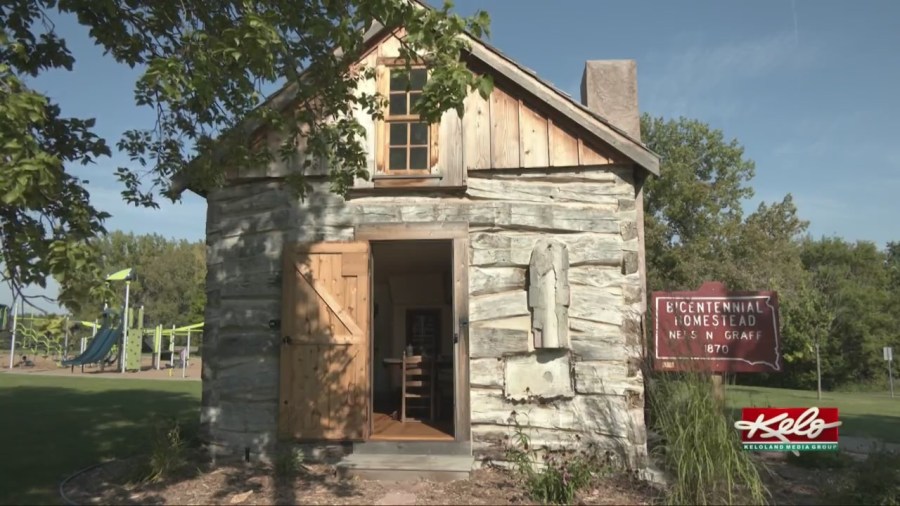BRANDON, S.D (KELO) — Back in the day, access to water, railroads and the Interstate Highway System were key factors in determining the early layout for communities nationwide, but for Brandon, the Interstate sparked an unprecedented population boom.
The Eminija Mounds just south of Brandon are evidence of some of the earliest-known Native American inhabitants in the area. Experts at the Brandon Historical Society say they can be dated anywhere from 500 to 1000 A.D.
“They were a mound-building culture. They were built largely for ceremonial purposes. There seems to be no rhyme or reason to who was in them, although they were carrying or were buried with specific items,” Brandon Historical Society president Jeremy Risty said.
A couple hundred years later, Native Americans settled a little further south at the Blood Run settlement, which is now known as Good Earth State Park. The first European settlers did not arrive until 1857.
“However, the European Americans in this area were largely driven out by the Great Sioux Uprising of 1862, which took place over in Mankato, Minnesota, and the response of the natives to that particular event, a very agitated response, basically cleared this area, including Sioux Falls, including Brandon, the surrounding area,” Risty said.
But, the Big Sioux River drew Europeans back to the area in 1868.
“As we know as South Dakotans, this is not necessarily a tropical paradise, right. Water is a little bit few and far between, so the Big Sioux River afforded one of the few possibilities of fresh water, fish, lumber, a lot of the things that you need to survive,” Risty said.
One of the settlers at that time was Nelson Graff, who built a cabin that is currently the oldest surviving wooden structure in Brandon.
“They had seven people in this house. There’s a loft above the main floor. It’s interesting as we bring people in, especially young kids, and they always wonder, ‘How could people live in such tight quarters?’ The reality is is that as a farm family, you weren’t here much. You were out doing chores, you were out milking cows, you were out plowing fields or whatever the case may be,” Risty said.
It was an uneventful time to live in Brandon for about 100 years after its second wave of homesteaders. In fact, its population was as low as 200 in 1950, and Brandon was not even incorporated until 1973.
“What helped Brandon survive was, I think, was the community atmosphere. It was a family helping family, friend helping friend. It was an interdependent community, so you had creameries you had, grain elevators, you had lumberyards, and everybody helped everybody,” Risty said.
Brandon eventually grew because of advances in transportation. The railroad provided a spark, but the creation of the interstate helped the population of both Brandon and Sioux Falls boom.
“It’s also symbiotic. As Sioux Falls grew, Brandon grew. People could live in Brandon, but work in Sioux Falls,” Risty said.
“We started getting the streets poured, and we had gravel roads before. We got water and sewer in, and then, we started to get into businesses like restaurants, fast food restaurants, hotels and we even got traffic lights,” Brandon Historical Society treasurer Howard Brown said.
Now, Brandon boasts a population of over 11,000, and its rapid growth is almost unheard of.
“It is a pretty remarkable speed and rapidity with which Brandon grew in just 50 years,” Risty said.
Even though Brandon looks nothing like it did 50 years ago, it’s still important for residents to remember its small-town roots.
“That’s one of the things that kind of makes Brandon unique is we have a larger school district and are next to the largest city in South Dakota, but we still have that small-town atmosphere and those small-town values,” Risty said.
“It’s good to keep that history for our next generation, so they knew where they came from or where their parents came from,” Brown said.
How Brandon got its name is still a source of mystery. There are theories that early settlers named it after a town in Vermont, while others think it was named after a railroad official.


